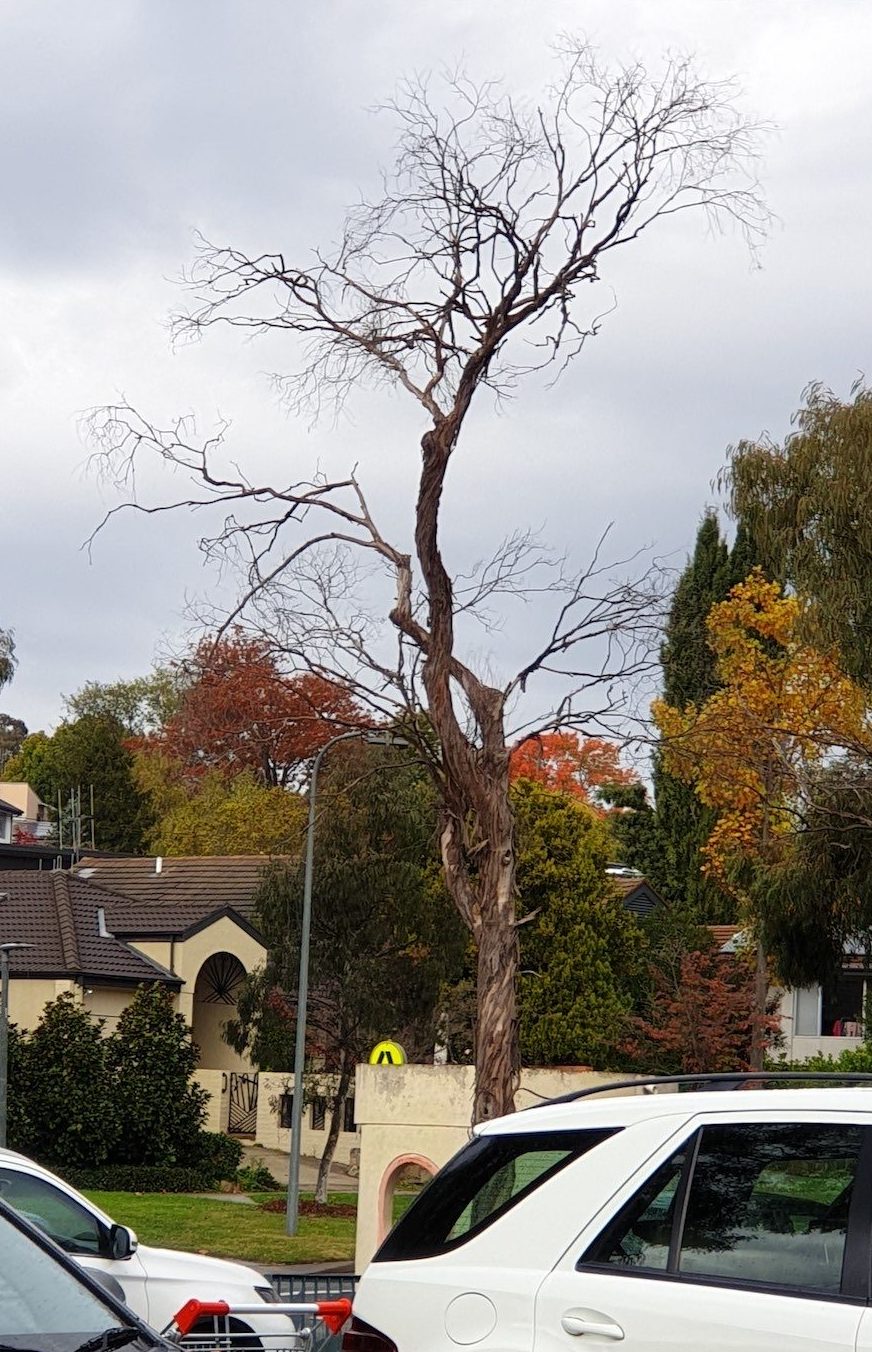Letter writer DAVID TYLER, of Macquarie, asked his local MLA what the Canberra Liberals’ position was on the tram to Woden. He wasn’t happy with the reply.
SINCE returning to Canberra about two years ago, my wife and I have enjoyed reading “CityNews” for the insightful and direct comments from its columnists regarding what appears to be a very poor, underachieving and arrogant Labor/Greens government.

I particularly refer to the “Seven Days” column of April 28 (“Only 906 sleeps, Elizabeth, it’s time to step up”) reminding the Liberal opposition on how to do its job and hold the government to account.
With so much being written in “CityNews” and by others in articles regarding the tram to Woden, its huge cost, its disruption to normal life caused by its construction and deflection of funds from more worthy recipients, such as health, I was prompted to stop at a booth manned by Peter Cain MLA, Liberal member for Ginninderra, and Liberal senator Zed Seselja recently.
I asked what was the Canberra Liberals’ position on the tram to Woden and how would they redistribute the funds allocated to it to other areas as “CityNews” has continually raised?
His answer: “Well, in principle we the ACT Liberals support the tram and its necessary construction, BUT we haven’t seen the final costing as yet.”
Then: “Of course, we plan to fix health and a raft of other issues”.
How, with no money and massive debt?
No answer was the stern reply, and I was advised to put my concerns to some other Liberal shadow member! I mean, the MLA in my own area flicks me off.
More recently, a political campaign flyer from Senator Seselja states he has arranged funding of more than $120 million for the tram and more funding for Commonwealth Bridge.
My word, what alternative government!
David Tyler, Macquarie

The years pass and the gums are dead
THIS photo was taken from in front of my favourite café in the Deakin shops. The dead gum tree has been there for at least eight years.
A tree to its left is clearly dying or dead, there is another dead tree 50 metres to the left, and a third 70 metres to the right.
The Barr government has done nothing about these eyesores, and may not even be aware of them.
A couple of months ago, a large oak tree, on a street corner two blocks behind (west of) the shops, toppled over due to strong winds and water-saturated soil. The stump of the tree remains on the nature strip, and has begun to coppice.
Elsewhere, “feral” grasses, including African love grass, paspalum, couch and carpet grass, and other weed species up to 150 centimetres tall, are rampant, but seldom, if ever, mowed.
Deakin is one of Canberra’s “prestige” suburbs, as indicated by recent housing sales, but Mr Barr’s government appears content to see prominent parts of it fall into a state of unkempt ugliness.
Dr Douglas Mackenzie, Deakin
Sue’s fanciful imagery
THE opinion expressed by Sue Dyer about Senator Seselja (“Liberals are running on empty”, Letters, CN May 12) is biased to the point of being bigoted and could have been expected given her five letters attacking Seselja that were published in our local daily newspaper between March 28 and April 28.
Her fanciful imagery cannot invalidate the corflute image about the Green credentials of Senate candidate David Pocock. Each of the seven planks in Pocock’s platform that address national issues has a very close parallel in the policy platform of the Greens party.
John L Smith, Farrer
Zed and Katy should both go
BOTH ACT senators, Zed Seselja and Katy Gallagher, have gone past their use-by date as neither has done anything for the ACT during their tenure.
There has been plenty of finger pointing about Zed, but nothing about Katy Gallagher, who firstly as health minister, then as chief minister spanning over six years, presided over a shambolic health administration and did nothing about it – and it’s still a shambles .
Mario Stivala, Belconnen
Infrastructure in the national good
AS I’m constantly reminded during this election campaign, the “Canberra Bypass” is not a proposed road, but the name of the mechanism whereby all federal governments determine what little infrastructure spending goes to the ACT and surrounding regions.
Whether such a process – either real or imagined – is the product of a “safe electorate syndrome,” or a “nothing for the Canberra Bubble” mindset I’ll leave to others.
For five years now, the ACT government and advocates for better rail have been making the case for faster and more frequent rail services between Canberra and Sydney.
Rail services between Sydney and Canberra are laughably slow, infrequent and don’t offer the “last word” in comfort.
Even some developing countries have fast or very fast trains operating between their largest, or second largest, city and their national capital.
Some of those lines are electrified and fuelled by green or greener energy, not diesel. Morocco’s line from Tangiers to Casablanca is the same length as the line to Sydney with travel time being 2 hours 10 minutes. Canberra to Sydney by train, at over four hours each way, is (literally) as grindingly slow as it was back in the 1960s.
The Canberra-Sydney rail corridor was listed by Infrastructure Australia as a worthwhile and pressing initiative in early 2020. Regrettably though, no tangible progress has been made in over two years on improving the Canberra-Sydney service notwithstanding the Infrastructure Australia listing.
Much of the blame also rests with a federal government with a history of promoting and funding projects based on considerations other than needs or merit. “The Guardian” (March 29) reported after April’s Federal Budget that “just 15 per cent of projects announced in the government’s multibillion dollar infrastructure budget splurge have been endorsed as priorities by Infrastructure Australia.”
Getting all governments to play by the rules requires more than just a federal anti-corruption body. The role of Infrastructure Australia in vetting sizeable projects also needs to be bolstered. And governments of every stripe need to make decisions based on merit and the national good, not sectional or self interest.
No more sports whiteboard politics or car park programs.
Barry Peffer, co-convenor, Canberra-Sydney Rail Action Group
Bus logic doesn’t stack up
ACT Greens MLA Jo Clay wants to increase bus services because she is “passionate about public transport as a way of lowering emissions and easing traffic congestion.” Her logic does not stack up.
More bus services would require more public transport subsidies. These subsidies directly support bus drivers and fossil fuels.
In 2020-21 Canberra’s average 10-kilometre local public transport trip caused more than three kilograms of carbon dioxide emissions per traveller. Canberra’s average nine-kilometre local car trip emits less than two kilograms of carbon dioxide per traveller.
Public transport subsidies indirectly support centralisation and urban sprawl. They support organisations that choose to locate centrally, rather than locating closer to their clients and their employees. They support people who choose to live beyond cycling distance of where they work or study.
More public transport does not necessarily mean less traffic congestion. From 2011 to 2016 the proportion of Canberra commuters who used public transport increased from 7.8 per cent to 8.2 per cent. The proportion of commuters who drove cars increased from 73 per cent to a record high of 74 per cent.
The government can increase public transport patronage by reducing fares, transfers or in-vehicle travel times, or by increasing car parking charges. Those changes would cause no or negligible increases in public transport emissions.
A 10 per cent increase in bus services would increase bus emissions by 10 per cent. The “ACT Transport Demand Elasticities Study” estimated that it would increase patronage by less than two per cent.
Leon Arundell, Downer
Displacing coal and gas
AN interesting discussion has arisen on your letters page about renewable generation and transmission developments.
Several things are inevitable as we go forward including the continuing penetration of rooftop solar and the transmission network continuing to evolve from its old mode of one-way transmission so as to serve the inter-connection of distributed solar farms, wind farms and storage be it batteries, pumped hydro or hydrogen/ammonia.
Several key aspects will contribute to the complex issue of renewable energy displacing coal and gas generation. Behind-the-meter generation and storage, both domestically and in commercial/industrial application will continue to expand playing a large and vital role.
Installation of excess renewable capacity to provide for seasonal storage in hydrogen or ammonia form, provide for electric vehicle charging and for the electrification of large industry will require major investment. Projects such as the Sun Cable and similar with their massive PV will help to further drive installation costs down.
As the AEMO Step Change scenario has identified and already predicted with some accuracy, developments toward 100 per cent renewable energy in our grid will continue toward a zero carbon electricity sector.
The challenges that need to join that journey are transport, agriculture and heavy industry. Recent moves in the steel sector provide due encouragement that this latter industry is also achievable.
Robert Brown, Camberwell, Victoria
Don’t the Greens know?
DR Douglas Mackenzie (Letters, CN May 5) lists four “solutions” to overcoming climate change but ignores the point of my letter: when and at what national and local personal cost will these changes create? Or don’t the Green’s know?
Greg Cornwell, Yarralumla
Who can be trusted?
In a world of spin and confusion, there’s never been a more important time to support independent journalism in Canberra.
If you trust our work online and want to enforce the power of independent voices, I invite you to make a small contribution.
Every dollar of support is invested back into our journalism to help keep citynews.com.au strong and free.
Thank you,
Ian Meikle, editor





Leave a Reply